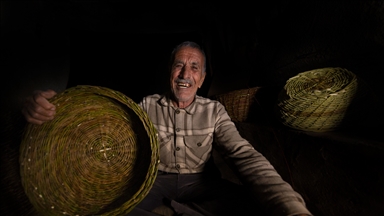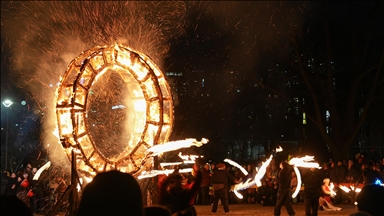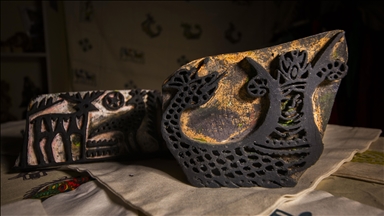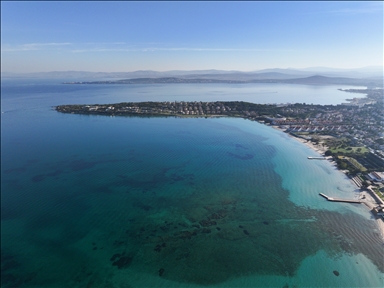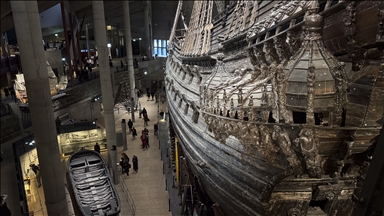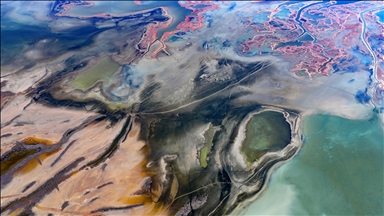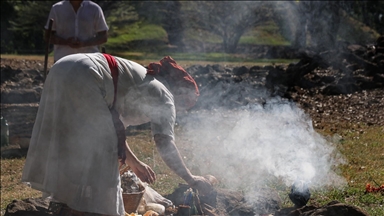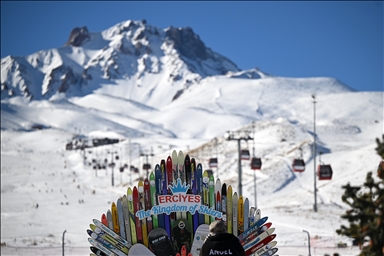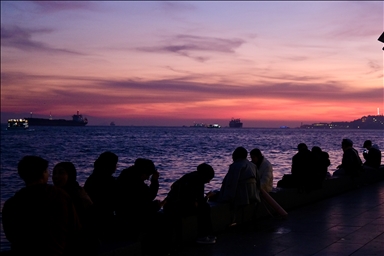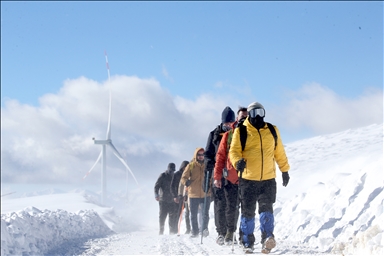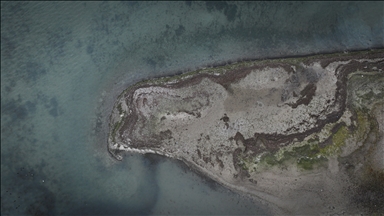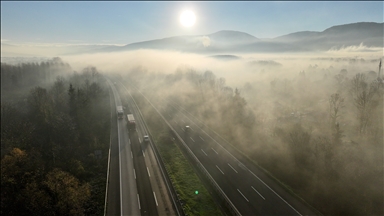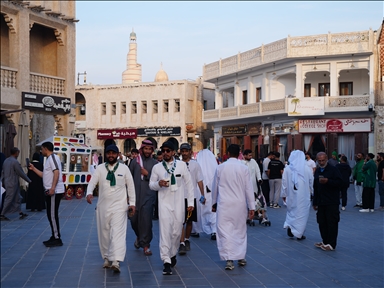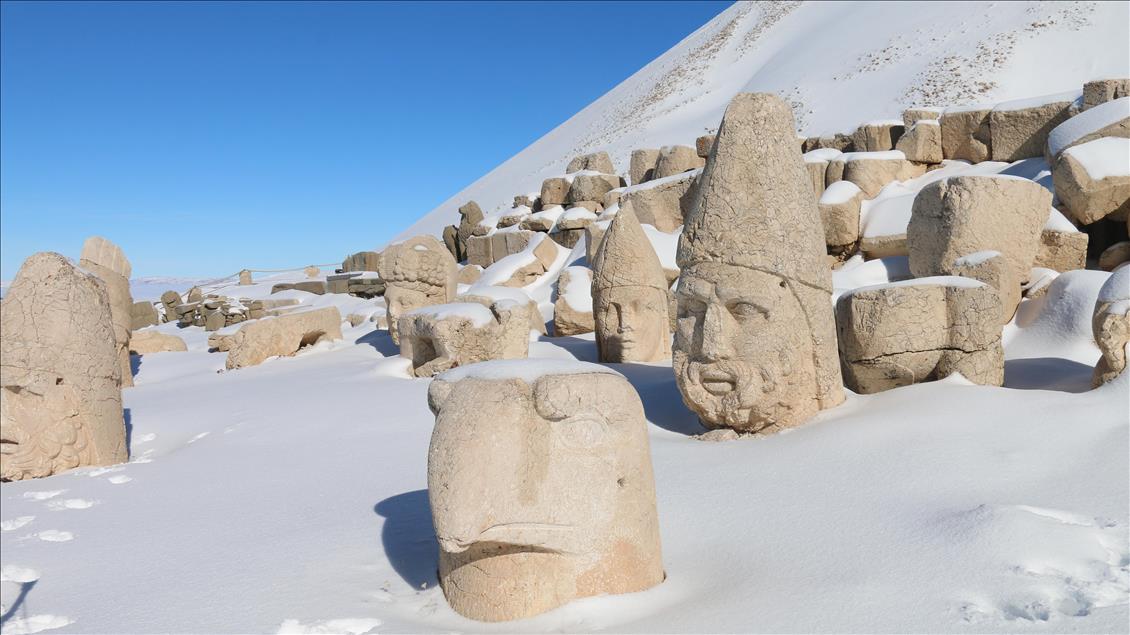
Mount Nemrut, located in Kahta district of Turkey’s Adiyaman province, receives season’s first snowfall on Dec. 2, 2017. The mount, notable for the summit where, in 62 BC, King Antiochus I Theos of Commagene built a tomb-sanctuary flanked by huge statues (8–9 m or 26–30 ft high) of himself, two lions, two eagles and various Greek, Armenian, and Iranian gods. Mount Nemrut has been preserved as a UNESCO World Heritage Site since 1987. The site is also famous for its beautiful sunrises and sunsets.
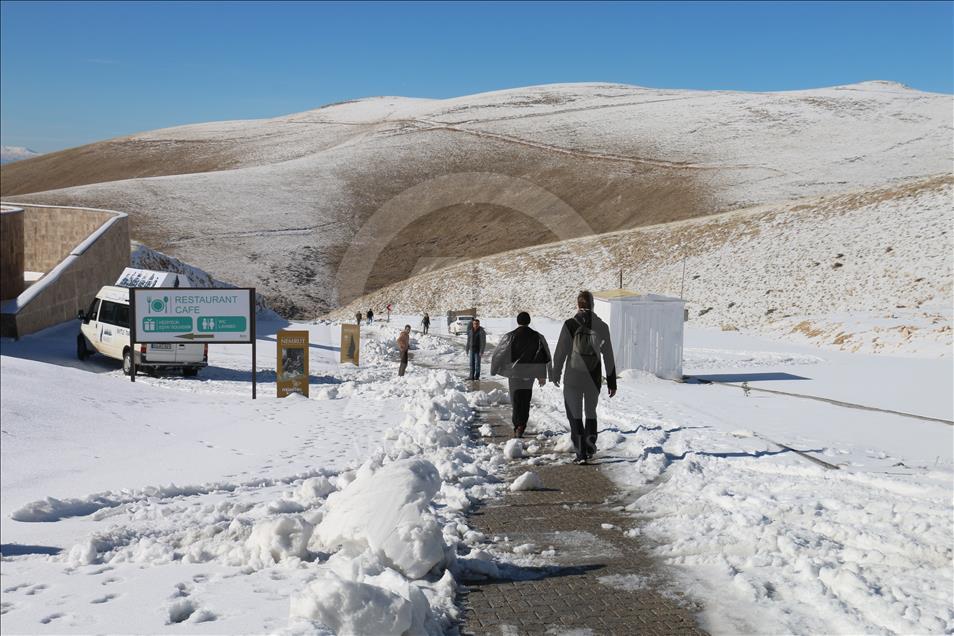
Mount Nemrut, located in Kahta district of Turkey’s Adiyaman province, receives season’s first snowfall on Dec. 2, 2017. The mount, notable for the summit where, in 62 BC, King Antiochus I Theos of Commagene built a tomb-sanctuary flanked by huge statues (8–9 m or 26–30 ft high) of himself, two lions, two eagles and various Greek, Armenian, and Iranian gods. Mount Nemrut has been preserved as a UNESCO World Heritage Site since 1987. The site is also famous for its beautiful sunrises and sunsets.
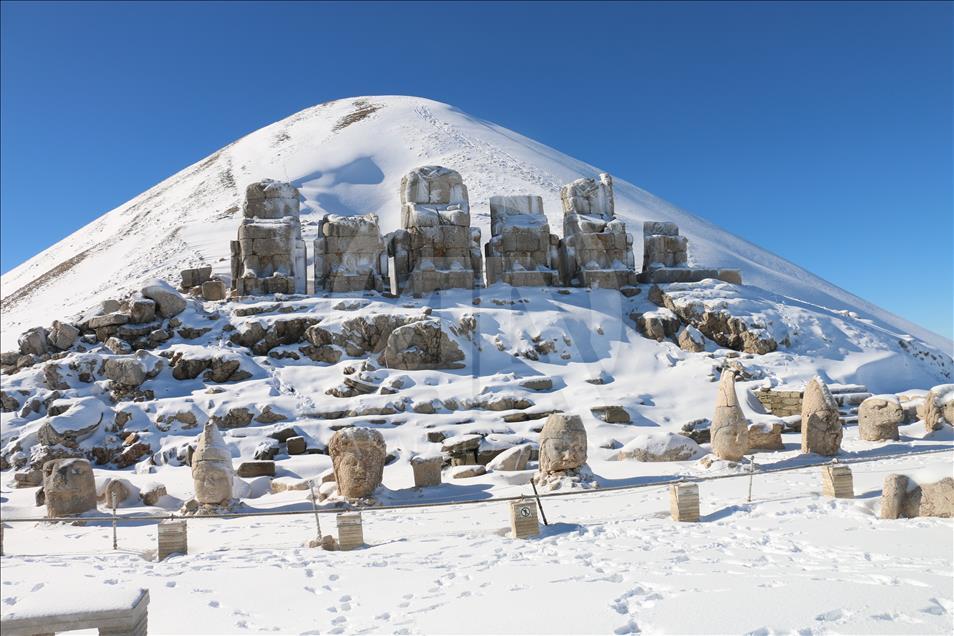
Mount Nemrut, located in Kahta district of Turkey’s Adiyaman province , receives season’s first snowfall on Dec. 2, 2017. The mount, notable for the summit where, in 62 BC, King Antiochus I Theos of Commagene built a tomb-sanctuary flanked by huge statues (8–9 m or 26–30 ft high) of himself, two lions, two eagles and various Greek, Armenian, and Iranian gods. Mount Nemrut has been preserved as a UNESCO World Heritage Site since 1987. The site is also famous for its beautiful sunrises and sunsets.
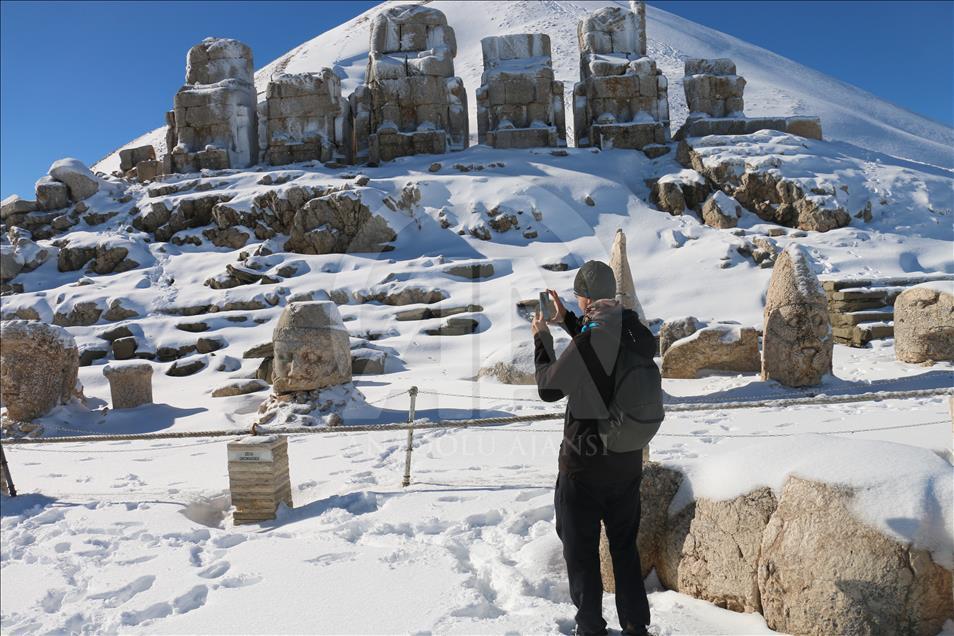
Mount Nemrut, located in Kahta district of Turkey’s Adiyaman province, receives season’s first snowfall on Dec. 2, 2017. The mount, notable for the summit where, in 62 BC, King Antiochus I Theos of Commagene built a tomb-sanctuary flanked by huge statues (8–9 m or 26–30 ft high) of himself, two lions, two eagles and various Greek, Armenian, and Iranian gods. Mount Nemrut has been preserved as a UNESCO World Heritage Site since 1987. The site is also famous for its beautiful sunrises and sunsets.
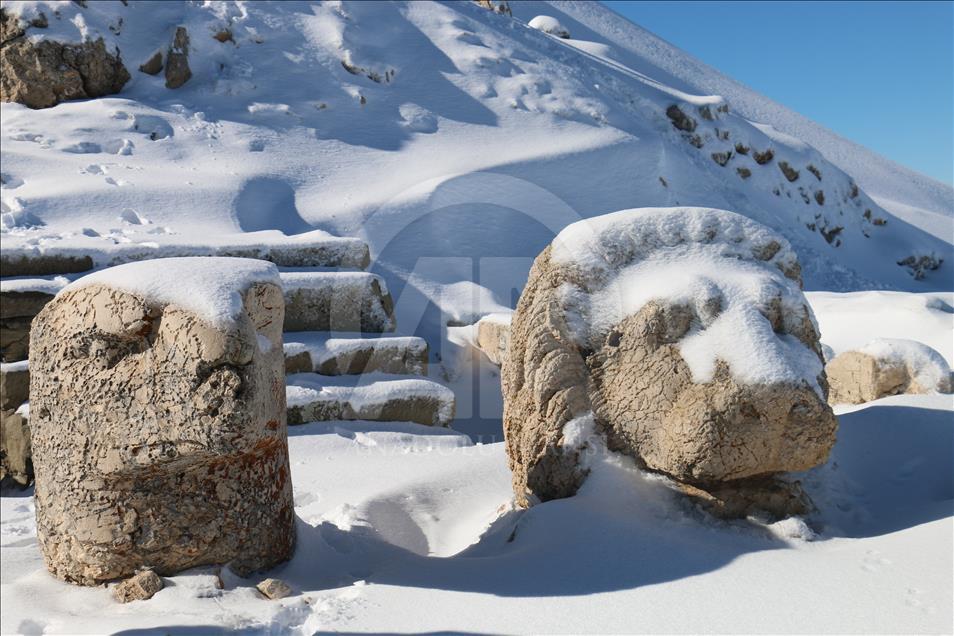
Mount Nemrut, located in Kahta district of Turkey’s Adiyaman province, receives season’s first snowfall on Dec. 2, 2017. The mount, notable for the summit where, in 62 BC, King Antiochus I Theos of Commagene built a tomb-sanctuary flanked by huge statues (8–9 m or 26–30 ft high) of himself, two lions, two eagles and various Greek, Armenian, and Iranian gods. Mount Nemrut has been preserved as a UNESCO World Heritage Site since 1987. The site is also famous for its beautiful sunrises and sunsets.
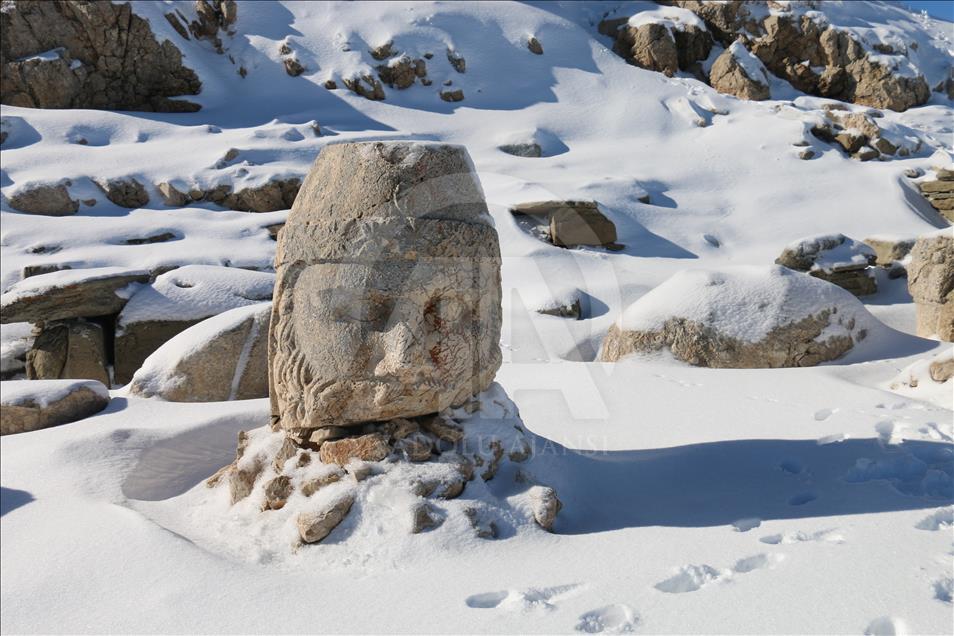
Mount Nemrut, located in Kahta district of Turkey’s Adiyaman province, receives season’s first snowfall on Dec. 2, 2017. The mount, notable for the summit where, in 62 BC, King Antiochus I Theos of Commagene built a tomb-sanctuary flanked by huge statues (8–9 m or 26–30 ft high) of himself, two lions, two eagles and various Greek, Armenian, and Iranian gods. Mount Nemrut has been preserved as a UNESCO World Heritage Site since 1987. The site is also famous for its beautiful sunrises and sunsets.
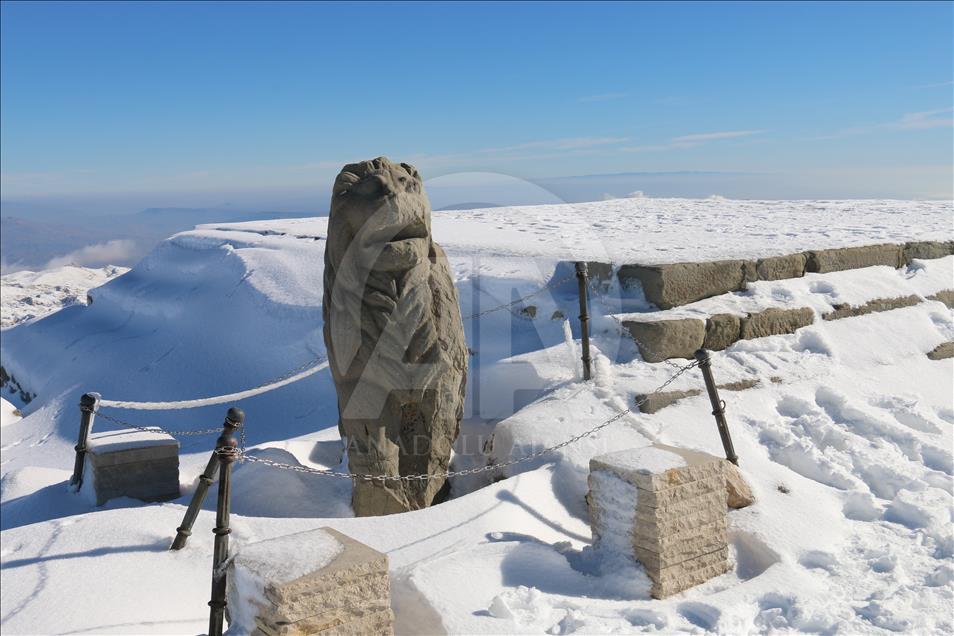
Mount Nemrut, located in Kahta district of Turkey’s Adiyaman province, receives season’s first snowfall on Dec. 2, 2017. The mount, notable for the summit where, in 62 BC, King Antiochus I Theos of Commagene built a tomb-sanctuary flanked by huge statues (8–9 m or 26–30 ft high) of himself, two lions, two eagles and various Greek, Armenian, and Iranian gods. Mount Nemrut has been preserved as a UNESCO World Heritage Site since 1987. The site is also famous for its beautiful sunrises and sunsets.
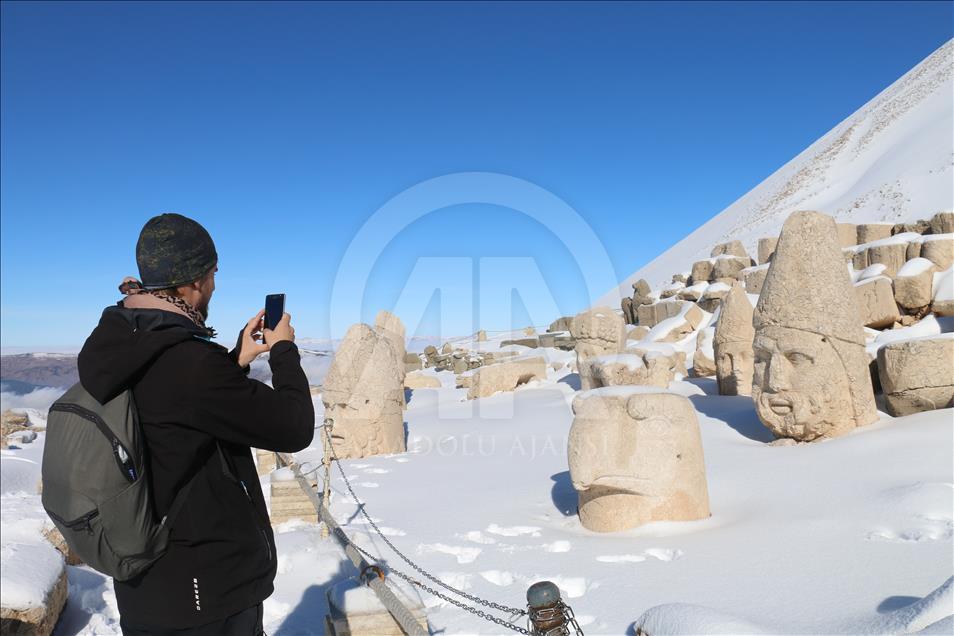
Mount Nemrut, located in Kahta district of Turkey’s Adiyaman province, receives season’s first snowfall on Dec. 2, 2017. The mount, notable for the summit where, in 62 BC, King Antiochus I Theos of Commagene built a tomb-sanctuary flanked by huge statues (8–9 m or 26–30 ft high) of himself, two lions, two eagles and various Greek, Armenian, and Iranian gods. Mount Nemrut has been preserved as a UNESCO World Heritage Site since 1987. The site is also famous for its beautiful sunrises and sunsets.
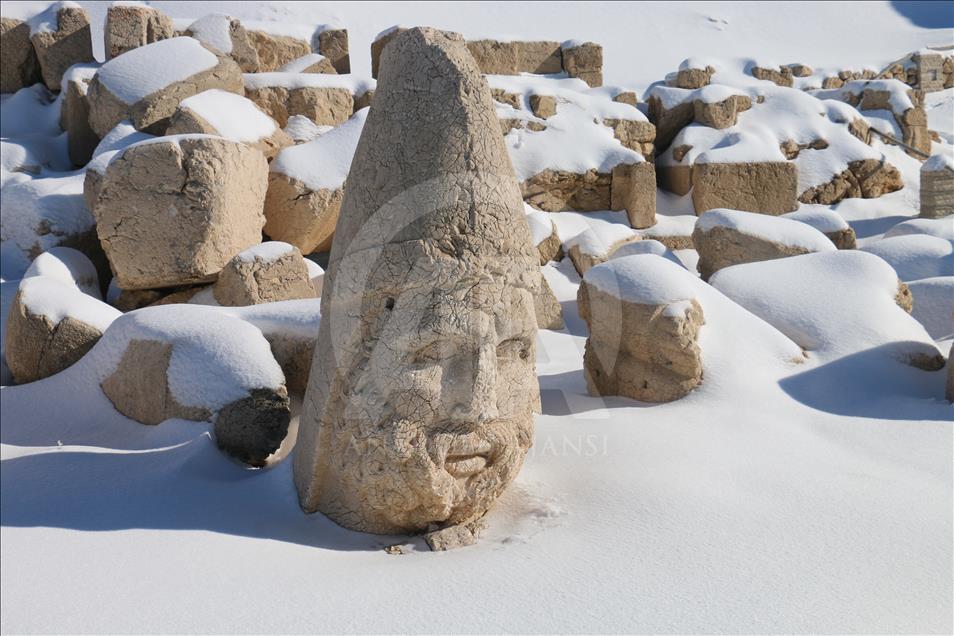
Mount Nemrut, located in Kahta district of Turkey’s Adiyaman province, receives season’s first snowfall on Dec. 2, 2017. The mount, notable for the summit where, in 62 BC, King Antiochus I Theos of Commagene built a tomb-sanctuary flanked by huge statues (8–9 m or 26–30 ft high) of himself, two lions, two eagles and various Greek, Armenian, and Iranian gods. Mount Nemrut has been preserved as a UNESCO World Heritage Site since 1987. The site is also famous for its beautiful sunrises and sunsets.
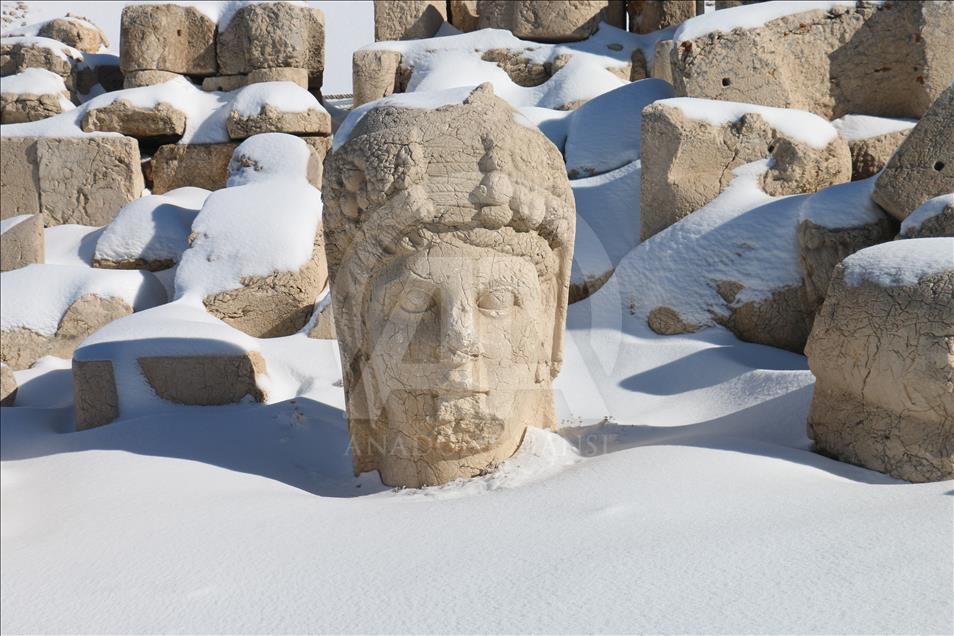
Mount Nemrut, located in Kahta district of Turkey’s Adiyaman province, receives season’s first snowfall on Dec. 2, 2017. The mount, notable for the summit where, in 62 BC, King Antiochus I Theos of Commagene built a tomb-sanctuary flanked by huge statues (8–9 m or 26–30 ft high) of himself, two lions, two eagles and various Greek, Armenian, and Iranian gods. Mount Nemrut has been preserved as a UNESCO World Heritage Site since 1987. The site is also famous for its beautiful sunrises and sunsets.
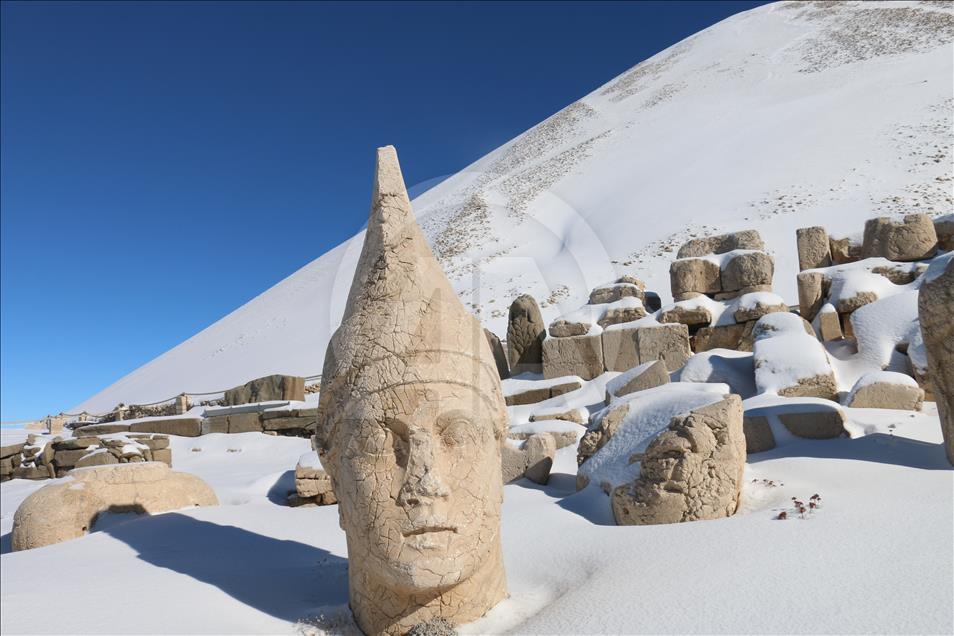
Mount Nemrut, located in Kahta district of Turkey’s Adiyaman province, receives season’s first snowfall on Dec. 2, 2017. The mount, notable for the summit where, in 62 BC, King Antiochus I Theos of Commagene built a tomb-sanctuary flanked by huge statues (8–9 m or 26–30 ft high) of himself, two lions, two eagles and various Greek, Armenian, and Iranian gods. Mount Nemrut has been preserved as a UNESCO World Heritage Site since 1987. The site is also famous for its beautiful sunrises and sunsets.
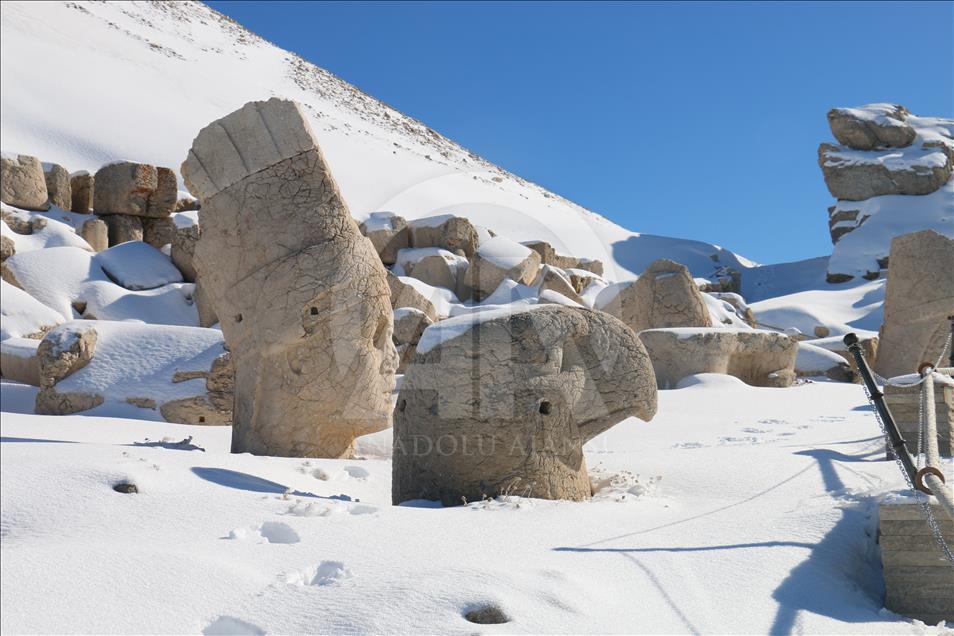
Mount Nemrut, located in Kahta district of Turkey’s Adiyaman province, receives season’s first snowfall on Dec. 2, 2017. The mount, notable for the summit where, in 62 BC, King Antiochus I Theos of Commagene built a tomb-sanctuary flanked by huge statues (8–9 m or 26–30 ft high) of himself, two lions, two eagles and various Greek, Armenian, and Iranian gods. Mount Nemrut has been preserved as a UNESCO World Heritage Site since 1987. The site is also famous for its beautiful sunrises and sunsets.
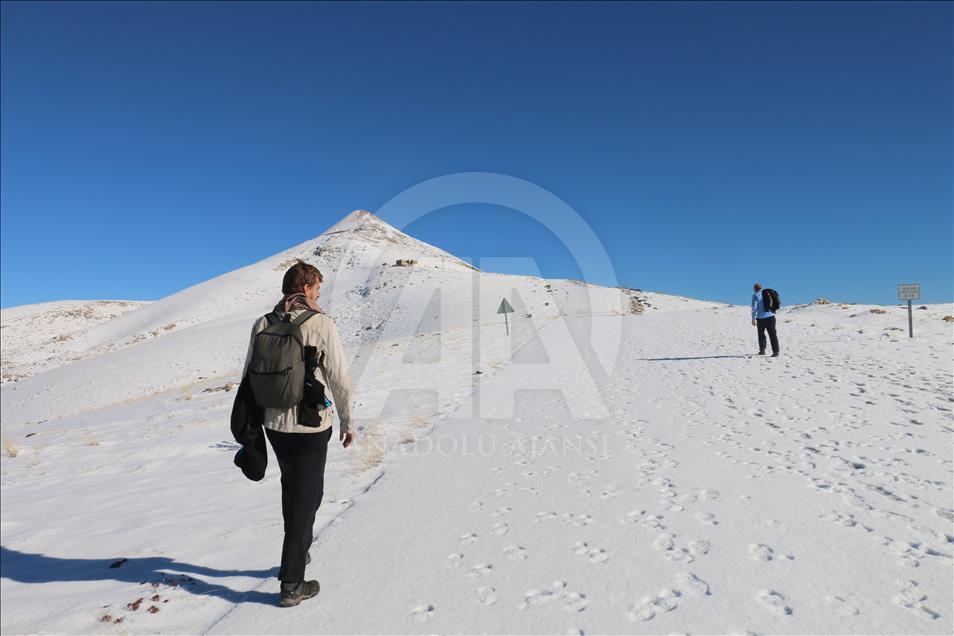
Mount Nemrut, located in Kahta district of Turkey’s Adiyaman province, receives season’s first snowfall on Dec. 2, 2017. The mount, notable for the summit where, in 62 BC, King Antiochus I Theos of Commagene built a tomb-sanctuary flanked by huge statues (8–9 m or 26–30 ft high) of himself, two lions, two eagles and various Greek, Armenian, and Iranian gods. Mount Nemrut has been preserved as a UNESCO World Heritage Site since 1987. The site is also famous for its beautiful sunrises and sunsets.


